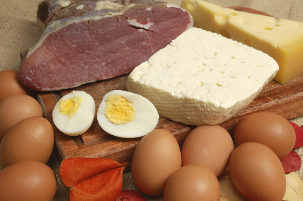Keto diet. What is a ketogenic diet? What are the results of the keto diet and what are the comments. How does it work, what are the difficulties, which menu is taking a keto diet and is it harmful?

- Keto diet
- Keto diet is a low-carbohydrate, high-fat diet designed to trigger ketone bodies in the body.
Why is the ketogenic diet effective, what are the contraindications and reviews, and what is the principle of action? What keto diet menu should be included, and what do those who lose weight think? We will discuss this today.
How does the keto diet work?
When fat, protein and carbohydrates are in our diet, our body will get energy from glucose. We only get glucose from carbohydrates. Grocery stores can now be reached directly, which is the most common type of food. But what happened on those days when carbohydrate products such as grains or bread were insufficient due to poor harvests, habitat halo, or seasonal changes?
The body is forced to obtain energy from fatty acids and protein. You may remember my video about running to lose weight-it was in it-I studied the process of oxidizing fatty acids for energy. Now, I will remind you briefly-all our organs have mitochondria in tissue cells, which have a great effect on fatty acids. This is the heart muscle of the heart muscle, skeletal muscle (the muscle we draw out in the gym) and smooth muscle.
However, our brain (with 60% fat content) will not lose weight, and even a long-term hunger strike will not significantly damage our mental ability. why? Reason-The BBB blood-brain barrier is the environment that ensures the permanent existence of the barrier brain inside. It is he who does not allow fatty acids to pass-neither outwards (which is why the brain does not lose weight) nor inwards. And the brain cannot consume fatty acids as energy sources.
However, the brain cannot survive without fuel. Naturally, it has been foreseen that since nutrition cannot provide enough glucose, the brain will switch to another fuel source-the so-called ketone body.
- Ketone bodies
Three substances are called ketone bodies
- Acetoacetic acid (acetoacetic acid)
- β-aminobutyric acid (hydroxybutyrate)
- Acetone
These substances are formed by fatty acids in the liver, which is called ketogenesis. Not much acetone is produced, our main fuel is β-aminobutyric acid. During this period, the central nervous system played a large part in the lack of carbohydrates in the diet.

Is the keto diet harmful?
Ketogenesis is a completely normal metabolic process and should not be worried. All worries come from the fact that the state of ketone bodies-when the body acts on the ketone bodies, it is often confused with pathology and urgent intervention in acid keratosis is needed. But these things are different, and now we will discuss what the essence is.
Ketoacidosis
What is ketoacidosis. This is almost the same as ketosis, but it is not caused by insufficient glucose due to lack of carbohydrates, but by lack of insulin. I remind you that our most important hormone insulin is a transport agent. This is how our loader knows how to carry glucose through the cell membrane.
When there is a lot of glucose but no insulin or it does not perform its function, the cell begins to experience energy starvation in the same way as a carbohydrate-free diet. As a result, the body produces a pile of hormonal fats (lipolytic, in this case called anti-islets) that can be broken down, and the liver begins to produce ketone bodies from fatty acids. How is this going?
There are a lot of undigested glucose, there are also a lot of ketone bodies, the kidneys are trying to get rid of excess ketones and glucose, which can lead to dehydration-the so-called osmotic diuresis. Due to the diuresis, electrolytes were washed away-do you remember this very bad from the beginning of this film, or even twice, it was very bad-the electrolyte balance shifted towards acidification, and as a result, this ketoacidosis developedUp. All of these require urgent hospitalization, because patients can easily move their horses.
Obviously, this situation is only possible in two cases
- Type 1 diabetes where the pancreas does not produce insulin
- Dehydration-diarrhea, vomiting, taking diuretics.
In other words, if you are healthy, you will not have type 1 diabetes, and you do not need to worry about ketoacidosis. In your case, the nervous system will work normally on the ketone body.
So how to use a keto diet
First, the most important thing is to enter ketosis. This is one of the most difficult tasks. Because in most cases-remember I told you that perturbation balance-people have been eating carbohydrate-containing foods for the first time in decades-this can cause stress to the body. If the body is not used to this situation, it will not enter ketosis within a day or two. It takes time. First, the body will eat the remaining glucose and glycogen. Then he will try to use gluconeogenesis to obtain glucose from amino acids, glycerol, and lactic acid. And, only when it disappears completely, it will start the ketogenic process, and with the squeaking, it will start to drag the power system of the central nervous system. On a new track. Remember-the cas body really doesn't like to violate homeostasis and do its best to resist.
This is the most difficult first time-you are stupid, angry, powerless, your brain refuses to work, your head is spinning-and many other fun. This state persists-in different ways for everyone-and may last for two to three weeks.
seconds. To get into ketosis, you need to cut out carbohydrates or keep them to a minimum-this is another problem. Some organs cannot use fatty acids or ketone bodies as energy. They need glucose, only glucose-this is the intestinal epithelium, the vascular endothelium, the lens of the eye, the adrenal cortex, etc. -I don't remember. So you can't leave them without glucose. Experience obtaining glucose from muscle or a small amount of carbohydrates through gluconeogenesis. Come with food. But this is just the point-remembering homeostasis-the desire to maintain balance at all costs-getting into ketosis is difficult, but getting rid of it is easy. Then, say hello to the fat storage on both sides of the side.
3rd place-To get into ketosis, you need to eat a lot of fat. Don't eat too much protein under any circumstances! And it is difficult to control. Because there is too much protein in your diet-with the help of the same gluconeogenesis and urgently making glucose rivets-you will once again get rid of this hard-won state of ketosis. If there is too little protein, muscle will gradually be lost. For beginners, it is very, very difficult to maintain this balance. Fat is exactly the same only-80% of the diet should be fat.
The fourth time-It is difficult to assess whether we have entered ketosis.
- It is unreasonable to use test paper to detect the presence of acetone in urine. We may be in ketosis, but there is no acetone in the urine.
- Blood glucose meters with bands specifically designed for ketone bodies can be used to analyze blood, but these bands are not cheap.
- Finally, there are special instruments that can measure acetone in breath. They were invented for patients with epilepsy because the ketogenic diet can cope well with seizures-but they also cost about $100.
Finally, if you decide to try the keto diet, how do you eat?
- Protein-1. 5-2 grams per body weight. This is conditional.
- The rest is fat.

Which foods are suitable for the keto diet?
- Egg Yolk
- All cheeses
- Fatty cheese
- Yogurt
- Lard
- Pork
- Nuts
- Salmon
- Trout
- Salmon
- Lamb
















